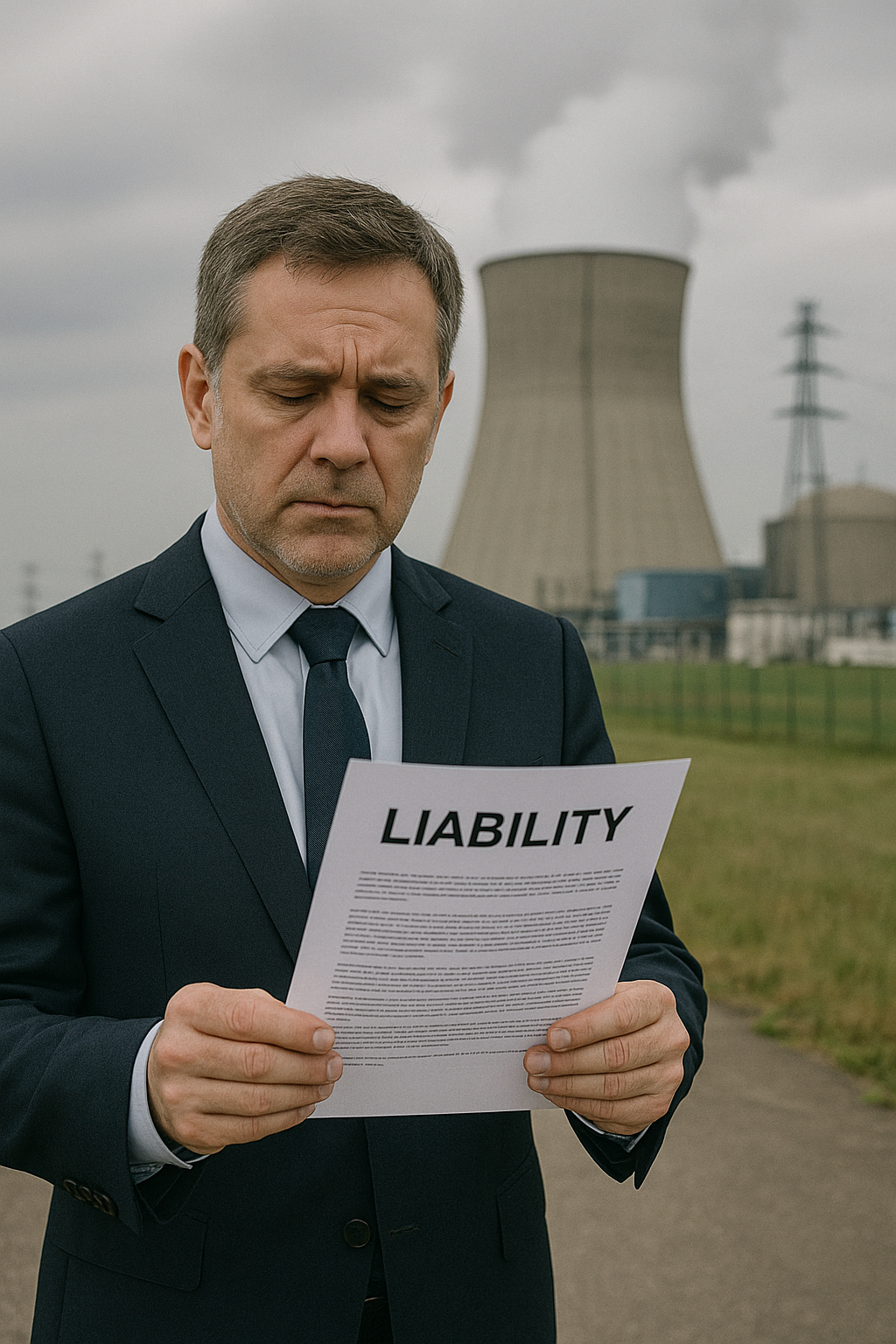Introduction
Nuclear power plants are among the most heavily regulated facilities due to the potentially catastrophic consequences of nuclear accidents. The liability of nuclear power plant operators towards third parties is governed by both national and international legal frameworks. Unlike general civil liability, nuclear liability is characterized by strict liability (liability without fault) and limited or unlimited financial caps, depending on the jurisdiction.
This article examines the legal liability of nuclear power plant operators towards third parties, focusing on international conventions, national laws, principles of strict liability, insurance obligations, and practical case studies.
1. The Concept of Nuclear Liability
Nuclear liability refers to the legal responsibility of nuclear power plant operators for damages caused to third parties (e.g., individuals, businesses, or the environment) as a result of nuclear incidents such as:
- Radioactive leaks,
- Explosions or reactor meltdowns,
- Contamination of air, water, or soil.
The unique risks of nuclear energy have led to the development of a specialized liability regime that differs from traditional tort law. Key characteristics include:
- Strict liability: Operators are liable regardless of negligence.
- Channeled liability: Liability is concentrated on the operator, excluding other parties (e.g., suppliers or contractors).
- Mandatory financial security: Operators must maintain sufficient insurance or financial guarantees.
2. International Legal Framework
Several international treaties establish the fundamental rules of nuclear liability:
2.1. Paris Convention (1960)
The Paris Convention on Third Party Liability in the Field of Nuclear Energy sets minimum liability standards, including strict liability, operator responsibility, and financial caps.
2.2. Vienna Convention (1963)
The Vienna Convention on Civil Liability for Nuclear Damage similarly channels liability to operators and establishes uniform rules for compensation.
2.3. Joint Protocol (1988)
This protocol links the Paris and Vienna Conventions, creating a global network for recognizing liability and compensation rights across member states.
2.4. Convention on Supplementary Compensation for Nuclear Damage (CSC, 1997)
The CSC expands compensation funds and harmonizes liability standards for nuclear damage on a broader international scale.
3. National Nuclear Liability Laws
Countries often enact domestic laws aligning with international conventions. For example:
- United States: The Price-Anderson Act provides a combination of private insurance and federal funds to compensate victims.
- European Union Countries: Follow Paris or Vienna Conventions, with specific national rules.
- Turkey: The Nuclear Energy Law (Kanun No. 5710) adopts the strict liability principle and mandates operator insurance coverage.
4. Key Legal Principles
4.1. Strict Liability
Operators are liable for any nuclear damage, regardless of fault. Victims do not need to prove negligence, only that the damage was caused by a nuclear incident.
4.2. Exclusive Liability of the Operator
Contractors, designers, and fuel suppliers are generally shielded from direct liability. Only the operator is liable to third parties, simplifying the compensation process.
4.3. Financial Caps and Insurance
- Some jurisdictions set liability caps (e.g., €700 million under the Paris Convention, subject to updates).
- Operators must maintain mandatory insurance or other financial guarantees to cover potential claims.
4.4. Governmental Role in Compensation
If damages exceed the operator’s financial security, government funds or international compensation pools may be used.
5. Scope of Nuclear Damage
The liability of nuclear operators extends to:
- Personal injury or death,
- Property damage,
- Economic losses (e.g., business interruptions),
- Environmental contamination and restoration costs,
- Preventive measures and emergency responses.
6. Procedural Aspects of Third-Party Claims
6.1. Jurisdiction and Applicable Law
Claims are typically handled by courts or administrative bodies in the country where the nuclear plant is located, under the applicable national nuclear liability law.
6.2. Limitation Periods
International conventions set time limits for claims:
- Typically 10 years for personal injury,
- Up to 30 years for latent health effects (e.g., radiation-induced illnesses).
6.3. Proof and Causation
Victims must prove a causal link between the nuclear incident and the damage. However, liability rules are designed to simplify evidence requirements, favoring victims.
7. Case Studies
7.1. Chernobyl Disaster (1986)
The absence of a unified liability regime in the Soviet Union at the time led to fragmented compensation claims. It highlighted the need for international agreements to ensure prompt and fair compensation.
7.2. Fukushima Daiichi Disaster (2011)
Japan applied strict liability under its Act on Compensation for Nuclear Damage. TEPCO, the plant operator, was held liable for billions of dollars in compensation claims, with significant state intervention.
8. Challenges in Nuclear Liability
- Insufficient Financial Coverage: Large-scale disasters may exceed the financial caps and available insurance.
- Transboundary Damages: Radioactive contamination can affect multiple countries, complicating jurisdiction and claims.
- Environmental Restoration Costs: Assessing and compensating for long-term ecological damage can be complex.
- State vs. Private Liability: Determining when a state must step in to cover damages remains a contentious issue.
9. Risk Mitigation for Operators
- Comprehensive Insurance Coverage: Operators must comply with national and international insurance requirements.
- Safety Protocols and Compliance: Regular audits, technical upgrades, and strict adherence to International Atomic Energy Agency (IAEA) standards.
- Crisis Management Plans: Establishing emergency response and evacuation protocols.
- Governmental Agreements: Collaborative frameworks with governments for post-disaster compensation schemes.
10. Future Legal Developments
- Rising Liability Limits: Many countries are considering increasing liability caps to reflect the true costs of nuclear accidents.
- Integration of Environmental Claims: Expanding the scope of nuclear liability to cover biodiversity and long-term environmental damage.
- Global Nuclear Compensation Funds: International initiatives aim to create larger, pooled resources for transboundary nuclear incidents.
Conclusion
The liability of nuclear power plant operators towards third parties is defined by strict liability, channeled responsibility, and mandatory financial security mechanisms. International conventions such as the Paris and Vienna Conventions ensure that victims of nuclear incidents have access to compensation, while national laws supplement these protections.
Given the high-risk nature of nuclear energy, operators must not only comply with strict legal requirements but also adopt robust risk management, insurance, and safety protocols to minimize both the likelihood of incidents and the legal consequences that follow.

Yanıt yok